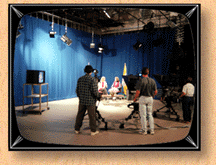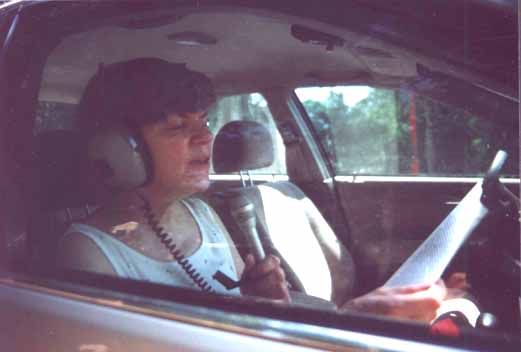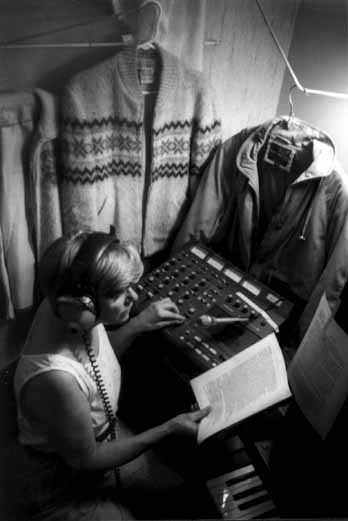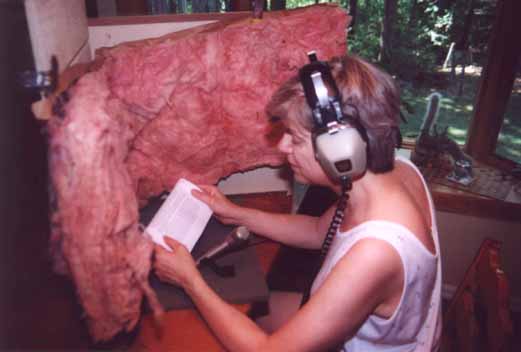

Your holiday vacation to Elizabeth, New Jersey, left you with hours of spellbinding footage ---the tempest of turnpikes and toll booths, the razzle-dazzle of refineries, and the lure of the LNG tanks, video so vibrant you can almost smell the air. You've edited the visuals for your masterpiece, and now it's time to add some narration.
You know how to set up a mike, and you know what buttons to push to dub in a sound track, and you may even have a mixer permitting you to combine music or sound effects with your voiceover. But where do you go to read your little script? The kitchen, with its refrigerator cycling on and off? The office with the telephone ringing and the kids clamoring to use the computer? The basement is pretty quiet, except for the furnace that sounds like the Space Shuttle when it fires up. And even if you send the family to MacDonald's and turn off the phones, heat, and other noisemakers, you still end up with echoey, hollow sound that reeks of amateur.
What you need is a sound booth, a place impervious to outside noises, but with acoustical treatment to reduce echoes made inside. And while we're at it, a little ventilation, some light, and a place to sit might be nice.
But who wants to build a regulation sound booth for just one production? (Some of you would, I'm sure, convert your entire home to a sound and video stage, if it weren't for that unenlightened family that lives with you, headed by the evil curmudgeon, Mrs. Sensible.) Is there a way to create an announce booth for occasional use, one that is easy and cheap to build, doesn't require much space, and can be set up and removed easily? Yes, there is, and there are several ways to do it.
The instant, super portable, ever-present sound booth you never thought of -
If all you need is a quiet place to record narration, then here's a tip from Elite Video's John Cooksey. Do your voiceover in a midsized or luxury automobile. Closing the windows seals out most of the exterior noise. If your neighborhood is too noisy, drive to a quiet one, or to an empty parking lot. Parking the car in your garage provides even more silence.

An automobile makes a quiet place to record narration
Regarding interior echoes, the auto manufacturers have spent millions designing quiet car interiors. Most echoes are absorbed, and those sounds that hit the front and rear windows are reflected harmlessly downward. With a judiciously positioned omnidirectional microphone, you can capture the conversation of one to four people clearly. A single narrator can use the dashboard and/or glove compartment to hold his/her notes while a lavalier microphone picks up his/her sound. In a pinch you could even use the camcorder's microphone if you mounted the camcorder on a tripod in the car and positioned it close enough to you. It is easy to get plenty of light for reading your script. Seats are included, and are more comfortable than you'll find in a million dollar sound studio.
Extra bonus: If you don't have a mixer, and want to include background music, guess what's sitting there in the dash? A cassette or CD player with a volume control easily within reach (for those who must act as their own sound engineers). Who could ask for more?
One note of caution: Do not run the car engine in the garage while you narrate. Your recitation could end in resuscitation.
Adapting a room -
Maybe the car idea is too funky for you (or you don't relish explaining to your neighbors or to Security what you were doing in the condo parking lot). Let's try some in-the-home solutions.
First, find the quietest room in the house, or one that can be made quiet by temporarily turning off electrical appliances. Basements usually work well because the cement walls stop most sound and the dirt on the other side is pretty quiet. Footsteps overhead may be a problem if you lack carpeting or have a pogo stick marathon occurring upstairs.
Attics are good because family footsteps are muffled on the floor below. A vaulted ceiling would deflect echoes nicely. So would the bare rafters and exposed fiberglass insulation. Extreme temperatures may be a problem. The roar of air traffic may penetrate the roof easily.
If you pick some other room in the house, make it one with an acoustical ceiling, a carpeted floor, soft furniture, and heavy drapery to reduce sound reflections. The bigger the room, the weaker the sound reflections will be (Try to position yourself far from the walls, but not exactly equidistant from any two walls --- in other words be near the center but a little off-center in the room).
If you don't have such a room, but have frequent need for one, you could appoint one room in your house with these features, making that room do double duty as perhaps your rec room and as your sound stage.
Maybe heavy curtains or acoustical wall treatment may seem inappropriate for an office, bedroom, or garage. Solution: put unobtrusive hooks in the corners of the room and, when you want to use it as a sound studio, run clothesline through the hooks. Next you would hang blankets, curtain material or even garments on clothes hangers from the line to act as temporary acoustical treatment. No kidding, clothes on hangars works marvelously. I recall once having to shoot an instructional video in a hospital room with hard walls and windows that echoed like a gym shower room. We found some rope, zigzagged it across the room and in front of the walls, and then hung doctors' lab coats everywhere. We silenced the room, but all the doctors found themselves making rounds in their street clothes for the next hour.

String ropes along the wall and hang garments from them to absorb
room echoes.
Not pretty, but cheap and easy (the sound insulation, not the
narrator)
The portable sound booth -
You can buy a professional 3-sided 3.5 x 3.5 x 6.5 foot collapsible sound booth from Markertek Video Supply (www.markertek.com) for about $600, or just buy the 2 inch thick acoustical honeycomb foam panels in gray or blue for $20-30 per 54 x 54 inch sheet and build your own. Sonex (www.silentsource.com) is another manufacturer of foam panels. Their 2 x 2 foot panels cost $75-100 for four.
Or you could create something yourself. You could glue egg cartons to 1/4-inch plywood, or cover plywood with plush carpeting. If you ripple the carpeting into 2-inch bends, it will further reduce reverberation.
A small, simple, portable sound booth that you can put on a desk or table, might consist of two 2 x 2 foot panels joined along one side (like a book). You would stand it up, opened halfway, and set your microphone on a stand (or prop your camcorder on a Cool Whip tub) inside the enclosure. Try to have the quiet, anechoic part of the room to your back as you face the "open book". The little booth will repress sounds and cancel echoes from in front of you while your body and the quiet wall behind you limits the noise from that direction. For added quietude you could lay another panel over the top of the "open book" to create a roof, and throw some carpet or foam on the table to reduce sound reflections from below.

This portable sound barrier took 10 minutes to build (and looks
it) using two
squares of plywood, joined with the home handiman's secret weapon
-- duct tape.
Clipped to that is a strip of fiberglass insulation. The mike
is sitting on a slab of foam.
After all is said and done, you should end up with clear, crisp voiceovers sans interference from household noises and room reverberations. Now, would you kindly spend a few minutes engendering some engaging English to energize your intriguing imagery.